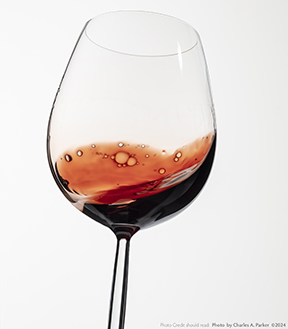
There’s the old saw about the sow’s ear and the silk purse. It reminds me of my old adage of “never blend a loser,” which admonishes readers against blending bad wine into good. It improves the bad wine at the detriment to the whole blend. That’s too bad your grapes were suboptimal and you absolutely did the right thing adding the SO2 to try to combat the rot and potential VA issue.
Unfortunately, rot in both red wines and white wines, especially if Botrytis cinerea are present, can mean the presence of polyphenol oxidase (PPO) in the juice and must. PPO just loves to cause brown pigments and though most winemakers think of white wines when they think browning, this is because the colors in red wine usually cover up, outshine, and mask any brown pigments.
In this case, your browning issue was exacerbated by the fact that Tempranillo, especially if grown in a warm area, is what I would call a “lighter color” red like Pinot Noir. It often just doesn’t have the color density and optic power of a darker, denser wine like Petite Sirah or Petit Verdot. Additionally, extra SO2 can sometimes strip color. What you’ve got going here is a three-part punch: Lower initial color, bleaching by extra SO2, and PPO browning activity. I’m not surprised you’re less than happy with the results.
For future reference, here are some tips for dealing with rot in red grapes:
• Pick as cold as possible to reduce PPO activity as much as you can.
• Add at least 50 ppm SO2 upon crushing as the PPO enzyme requires oxygen to work and SO2 is an oxygen-scavenger.
• Try to maintain a carbon dioxide environment in your fermentation vessels before fermentation starts. Dry ice pellets do a great job of blanketing a grape bin before the grapes go in, for example (learn more about this and other uses of dry ice in the “Techniques” column in this issue beginning on page 46).
• Add extra tannin, like 300 ppm or so, of a commercial winemaking tannin before inoculation to act as oxygen scavengers and to “beef up” mouthfeel and color stability.
• Do not do a cold soak as more PPO can be released during this phase.
• Do not try a feral fermentation and be sure to use a fast-fermenting “bulletproof” yeast strain like Prise de Mousse.
• Keep maceration short to minimize the release of PPO.
• Try to exclude as much oxygen as possible during the aging process.
• Be aware that rot-affected wines may not age as long or as well as non-affected wines.
As to how to help your current batch, I would give fining agents a try. You could certainly try fining out some of the browning with polyvinylpolypyrrolidone (PVPP), and then see if you could mix in some darker varietals as long as you still like the aroma and flavor of the Tempranillo.
I say “never blend a loser,” but my longtime readers know I also say “do your bench trials.” If you find something that works, and especially something that you like, go for it! You’re in a great area for making amazing wines in Texas, I encourage you to keep trying! Unfortunately, sometimes we don’t have as much control of the condition of grapes when they come in as we’d like — especially as a home winemaker relying on others to grow and harvest your grapes — but we can use best practices to make the most out of what we have. Good luck!




